Whiskey Row was once 'left behind.' Now it's the tourism jewel of downtown. How it's changed
Twenty years ago, the future of downtown Louisville's Whiskey Row was hard to see. The block-long stretch of historic buildings dating back to the mid-to-late 1800s was largely empty after a period of stagnancy.
Boarded windows covered vacant buildings once part of a proud bourbon heritage along Main Street ― an area that saw bourbon barrels flow from Kentucky distilleries onto steamboats and railcars to consumers across the globe.
Today, the block is among the busiest downtown.
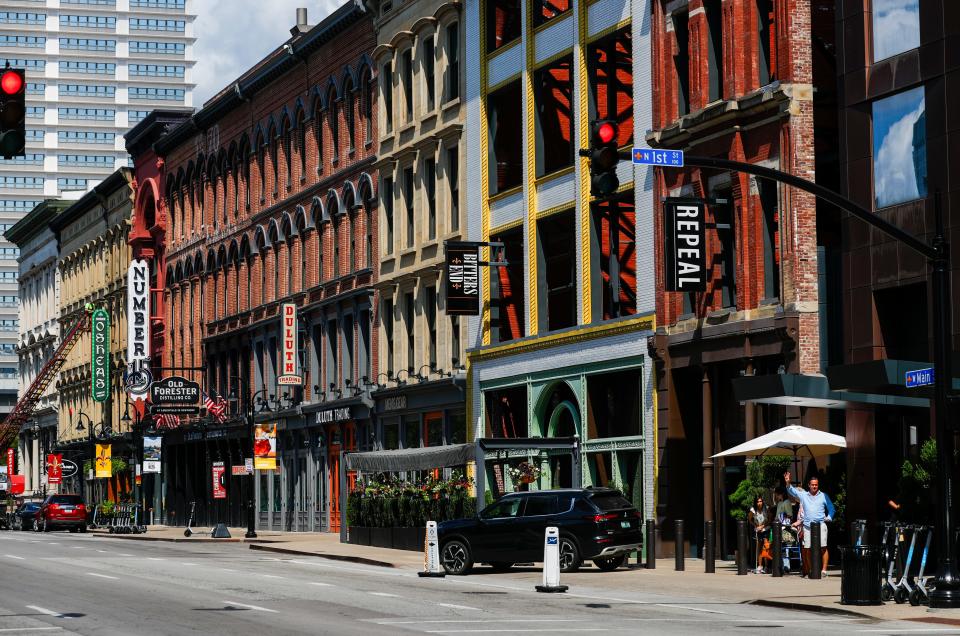
Restaurants, shops, and a hotel have brought new life to the many formerly empty historic cast-iron façade buildings on the north side of the 100 block of West Main Street. And the recent opening of a new entertainment venue, social hall Number 15, wasn’t just the latest in a string of openings there. It marked the final empty storefront to be restored and put back to productive use during a growth and renovation spurt that has taken almost 20 years.
Through the Great Recession, an 11th-hour sparing from a wrecking ball, a devastating fire, and the coronavirus pandemic, the block has endured — and grown. And as bourbon tourism continues to fuel investment downtown, Whiskey Row is poised to yet again take a leading role in the city’s storied history with the spirit.
Developer Valle Jones, whose father first bought 131 W. Main St. in 1984, and who herself later helped lead renovation efforts, said the tale of saving Whiskey Row has lessons for future downtown development.
"We think, 'Oh, it just happened.' It never just happened," she said. "It takes public sector investment … It takes private sector vision and tenacity. And it takes time."
100-plus years ago, bourbon was king on Whiskey Row. Then it was 'left behind'
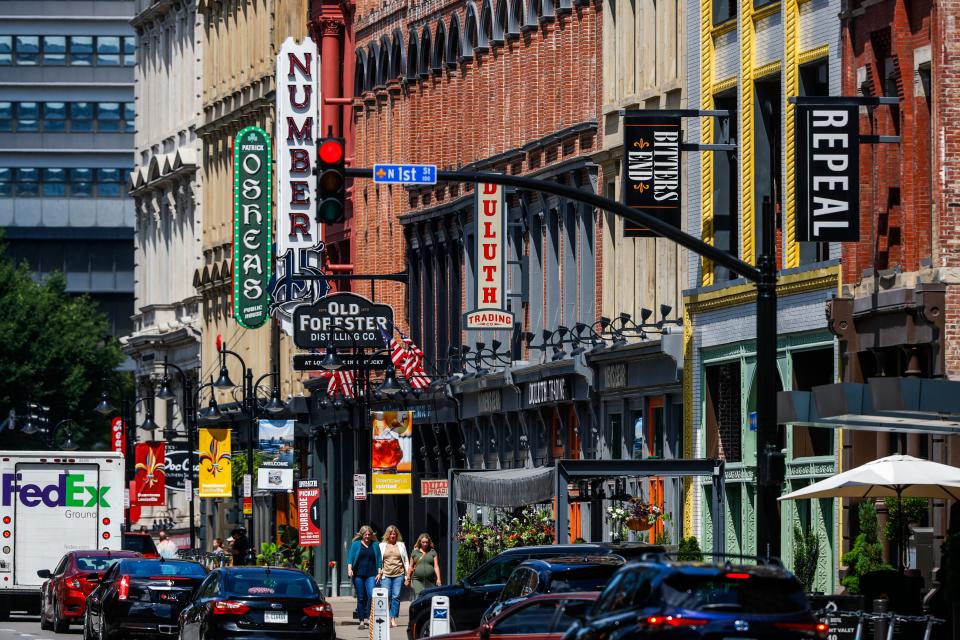
A walk in 2023 down the north side of the 100 block of West Main Street is remarkably similar today to the same stroll over a century ago.
What Louisvillians consider Whiskey Row today actually stretched over many blocks of Main Street. Some 50 whiskey merchants operated warehouses and offices on the strip, close to the vital transportation hub that was the Ohio River, and later, downtown railroads.
By 1905, the 100 block of West Main Street had nearly 20 distillers, wholesalers and other whiskey-related businesses, according to national historic registry records, making it the heart of the bourbon industry downtown.
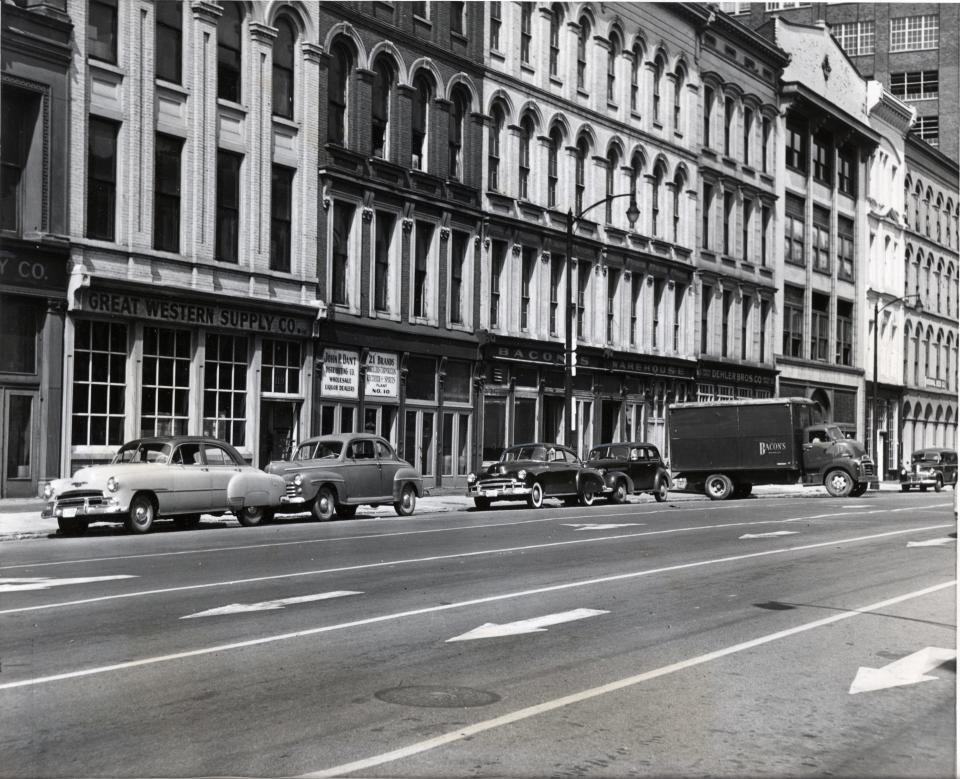
“Whiskey Row is just this wonderful story that connects our distilling past to our bourbon tourism future,” Stacey Yates, chief marketing officer with Louisville Tourism, told the Courier Journal. "What our state has in spades, and I think even people in our state don’t realize that Louisville has, is that legacy, that history. We didn't have to make it up."
The advent of the automobile along with Prohibition largely dried up the block, shifting the area to other commercial uses in the following decades.
By the 1980s, the strip was mostly only active at night, largely dotted with restaurants, nightclubs and live music venues.
Hopes were high for revitalization after the Presbyterian Church (U.S.A.) moved its headquarters to the block north of Whiskey Row in 1988, but a rebirth failed to materialize, the Courier Journal reported at the time.
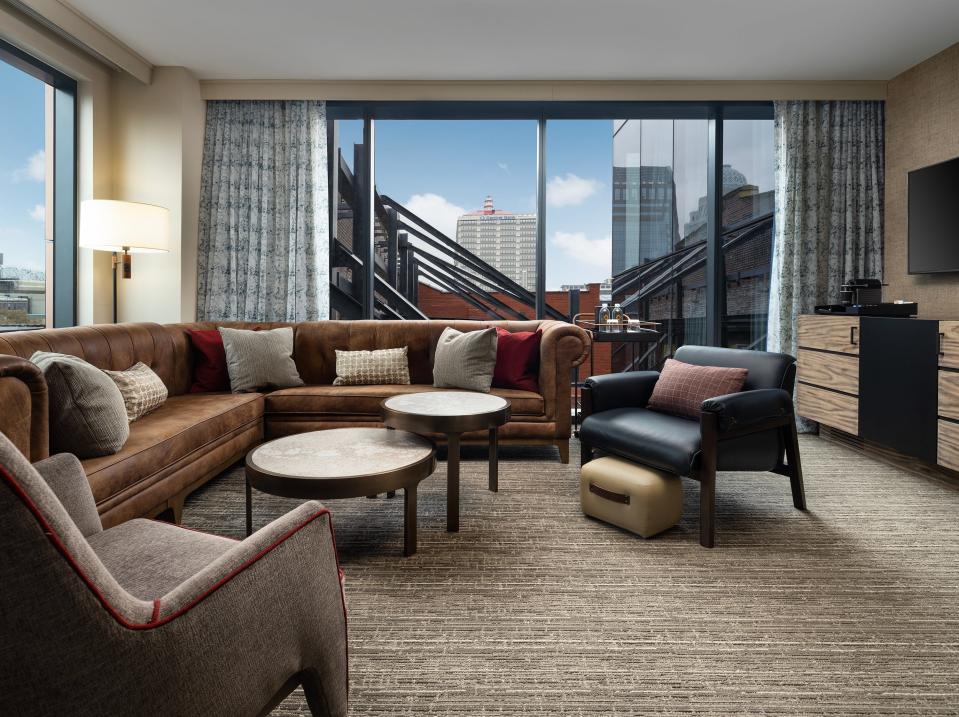
A March 1988 headline, “Once-thriving block of Main Street is anything but lively these days” lamented the closure of bars and nightclubs and the appearance of “for lease” signs on many buildings.
Come the turn of the century, Whiskey Row sat largely vacant.
The collapse of an 1852 building on the east end of the block in 2001 — now the site of two new hotels — called into question the structural health of the aging structures. Around that time, a $20-million plan for apartments, offices, retail and hotel was also announced but never materialized.
Through the decade, the block appeared on annual lists of most endangered historical places in Kentucky. As one Kentucky historic preservation advocate put it in 2006, Whiskey Row had been “left behind.”
How the downtown arena, fear of demolition spurred investment
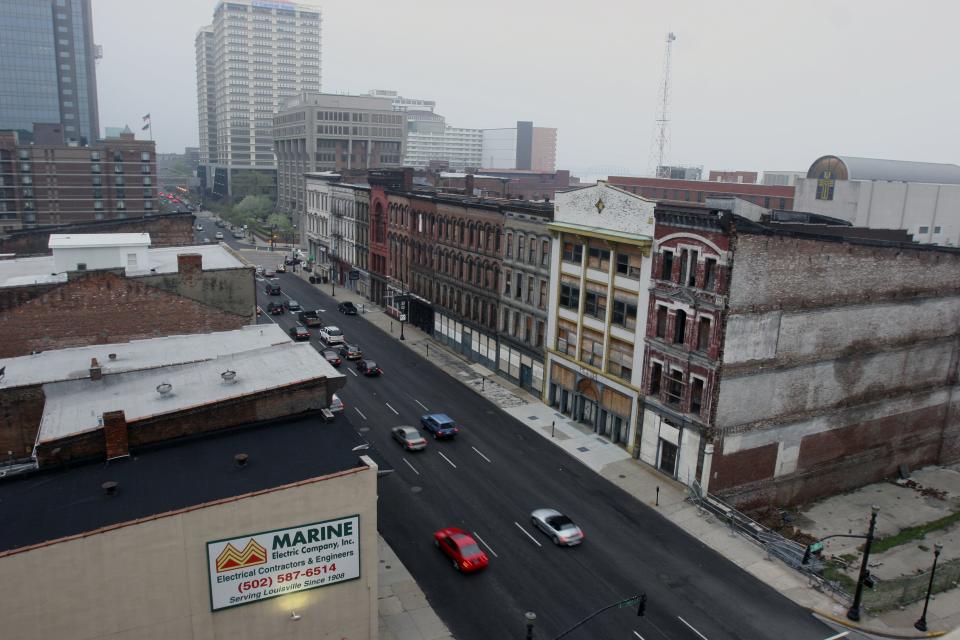
Those who spoke with The Courier Journal for this piece pointed to no one person, no single event that made Whiskey Row what it is today. But there were clear inflection points along the way, leading to a domino effect that slowly built back one of the great downtown blocks of Louisville.
In the early 2000s, Waterfront Park was developing to the north. Louisville Slugger Field had opened to the east. Downtown stretched southward and a growing cultural district was evolving to the west.
Whiskey Row was the hole in that development donut, developer Jones said.
By 2005, a massive announcement was changing the calculations for the block: an arena, known today as the KFC Yum Center, was newly proposed for downtown.
Partnering with her brother, Stephen Jones, and local prolific developer Bill Weyland, the trio planned the redevelopment of the two westernmost buildings, a project announced in 2007 and completed in 2011.
In 2006, the owners of O’Shea’s Irish Pub bought 123 W. Main St., eventually opening Patrick O’Shea’s in 2010 after two years of renovations.
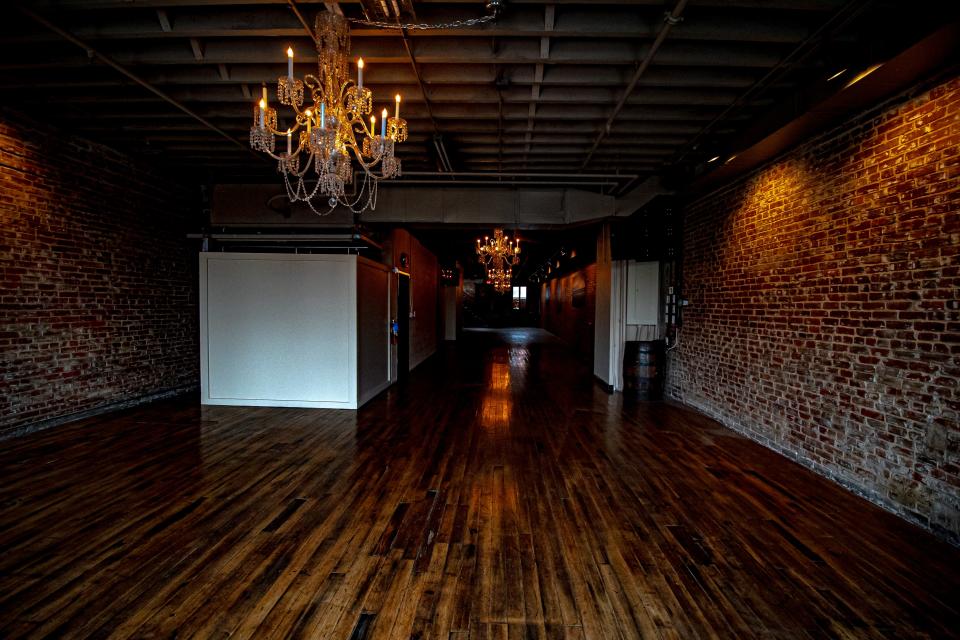
Weyland and Valle Jones said the Whiskey Row Lofts project that included offices and apartments above Bearno’s By-the-Bridge (there since 1997) and Doc Crow’s (which opened in 2011) helped prove the mixed-use model could work on the block.
George Timmering Jr., part-owner of Bearno’s, has worked at the Italian restaurant and its predecessor on the corner of Second and Main streets for some 30 years.
“You can almost say that the arena kind of kicked off the development of the block and bourbon has pushed it to the finish line,” he said. “We've seen it all through the years and to see it finally come through is exciting.”
The remainder of the block was owned by local developer Todd Blue, who had announced plans in 2007 for the “Iron Quarter” mixed-use project that included hotels, office, and retail space.
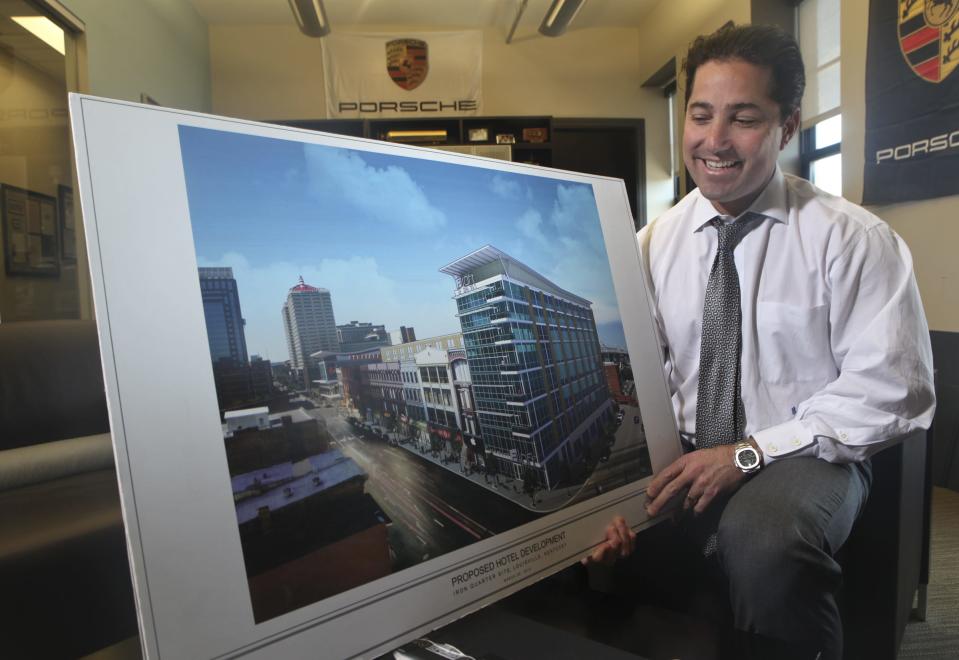
Blue sought to demolish the buildings in 2010, and when the city refused, Blue filed suit.
Newly elected Mayor Greg Fischer settled with Blue, allowing him to demolish the structures, setting off alarm bells for history and architecture lovers alike.
“That, in my estimation, was the potential destruction of Whiskey Row,” said Weyland. “We would have had none of the authenticity and scale left.”
Faced with an impending demolition, an investment group including local developer Steve Wilson and philanthropist-businesswoman Laura Lee Brown, as well as the Brown-Forman Corporation, and a handful of civic-minded funding partners who wished to remain anonymous, banded together to pay Blue $4.85 million to acquire and preserve five of seven buildings that would have met the wrecking ball.
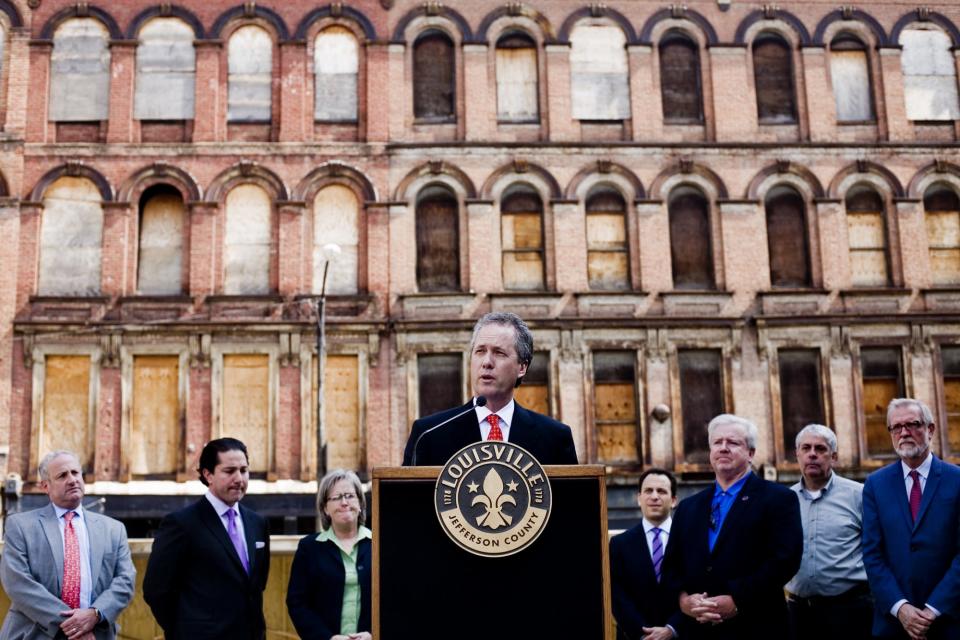
The deal, aided by the city and the Downtown Development Corp., allowed Blue to demolish the two easternmost buildings while preserving the facades. The move was hailed as a victory for preservation and a means to build on the KFC Yum Center's momentum.
Developer Jones credits philanthropist Christy Lee Brown with helping rally support to save the bulk of the historic row of buildings.
"The return on their investment was never meant to be financial," Jones said of the equity partners. "The return on their investment was going to be preserving historic buildings, revitalizing a critical block in downtown … and creating jobs."
Spared from the wrecking ball, plans were soon drawn to spin off the properties into an Old Forester distillery and visitor’s center at 117 and 119 W. Main St. and another mixed-use development at 111, 113 and 115 W. Main St. under the banner of 111 Whiskey Row.
Then came the fire.
From blaze to bourbon renaissance
A three-alarm blaze in July 2015 nearly sent plans to revive Whiskey Row up in smoke.
Investigators determined early renovation work in the basement of 113 W. Main St. accidentally caused the blaze. A cutting torch had set fire to nearby materials and was accelerated by nearby combustibles.
More than 80 firefighters worked the scene, saving the buildings owned by Brown-Forman from much damage and preventing the total collapse of the 111 Whiskey Row structures.
After much stabilization and rebuilding work, Duluth Trading was announced in 2017 as the development’s first tenant for the ground floor, becoming the largest downtown retailer since the Louisville Galleria closed more than a decade earlier to make room for Fourth Street Live. Upper-floor office tenants and apartment units soon followed.
Old Forester Distilling Co. opened its doors the following year, returning to the same building the brand called home from 1882-1919.
Building on the momentum of the Aloft Louisville Downtown hotel that local developer Steve Poe along with Indianapolis-based REI Real Estate Services and White Lodging opened in 2015 at 102 W. Main St., the development group opened two new hotels across the street, incorporating cast-iron facades that had been preserved years before.
Hotel Distil, 101 W. Main St., and Moxy Louisville Downtown, 100 W. Washington St., opened in fall of 2019.
"You had this really dynamic mix of old authentic Whiskey Row with new, exciting architecture, which is in my mind the ideal way that it should have been redeveloped," Weyland said.
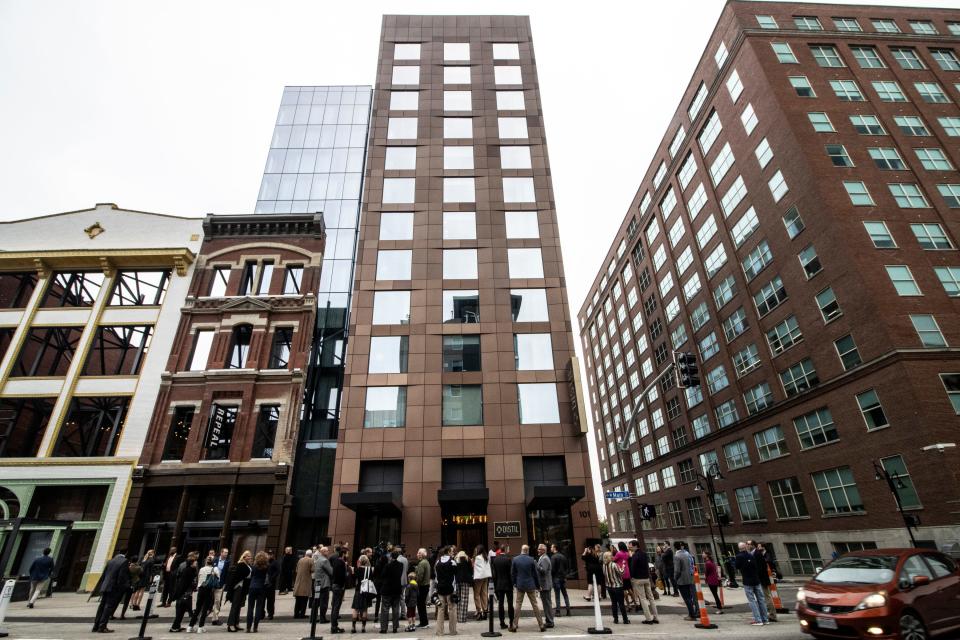
The final piece of the historic row fell into place earlier this summer with the opening of social hall Number 15, a concept that is reenergizing 121 W. Main St. with five floors of food, drinks, live entertainment, event space and rentable accommodations.
Louisville native Drew Shryock, owner of Whiskey Row Walking Tour, said his customers are always wowed by the concentration of historic buildings as he walks them down Main Street.
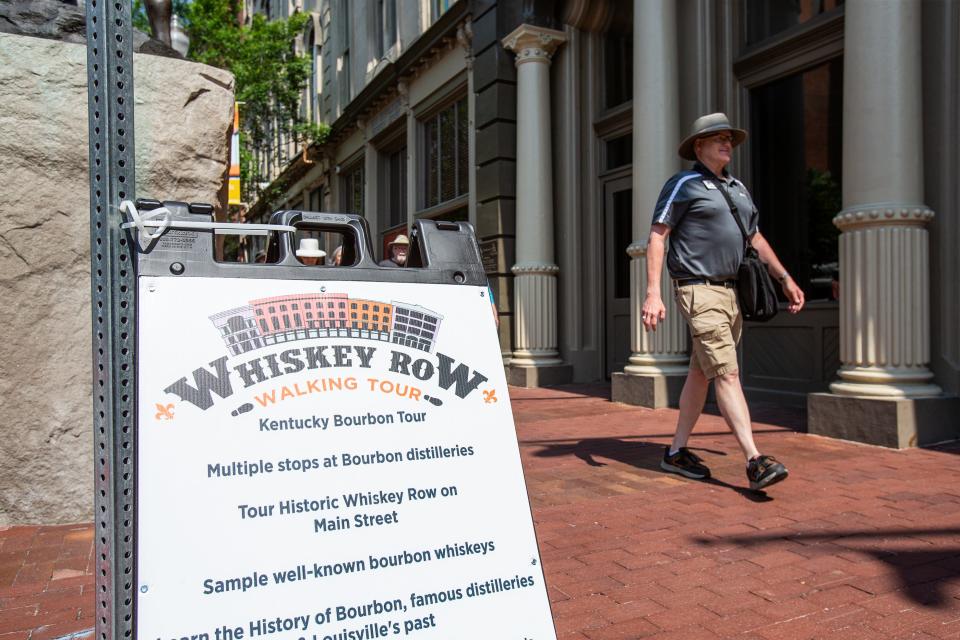
“I think it's amazing what's happened in the last 15 years to Whiskey Row,” he said. “It's kind of returned to its roots, being whiskey and bourbon oriented. The crowning achievement is when Number 15 goes in, the last piece that had to be developed.”
What is Whiskey Row's role now in downtown Louisville?
Now a fully activated block, Whiskey Row is a tourist destination in its own right and an example of what can happen with a sustained focus on development.
Yates, with Louisville Tourism, said travelers are looking to visit destinations with a sense of authenticity, a sense of place. Reviving the term “Whiskey Row” around 2010 for branding purposes has helped the larger effort to develop bourbon tourism in Louisville.
“It is a history that will continue to set us apart from our competition, which is growing daily,” she said.
Weyland said the Whiskey Row's mix of living spaces, restaurants, tourist attractions and commercial space can be a blueprint for future transformation in the city.
"That block really represents an important way for the city to be a 24-hour city and contribute in various ways through various uses to the dynamic of the downtown as a neighborhood," he said. "That block really demonstrates that probably better than any block that we've got in our city."
Rebecca Fleischaker, executive director of the nonprofit Louisville Downtown Partnership, said Whiskey Row’s unique historic nature played a key role in its development, a characteristic not necessarily shared by other blocks in need of revitalization.
Still, she said, it illustrates the importance of a “special recipe” of people who come together with a shared vision and the funding to make it happen.
"Economic development begets economic development," she said. "When something starts, there really is a nice domino effect of what other things can then succeed and then you start to build a critical mass, which builds and builds and builds and that's what that block exactly is"
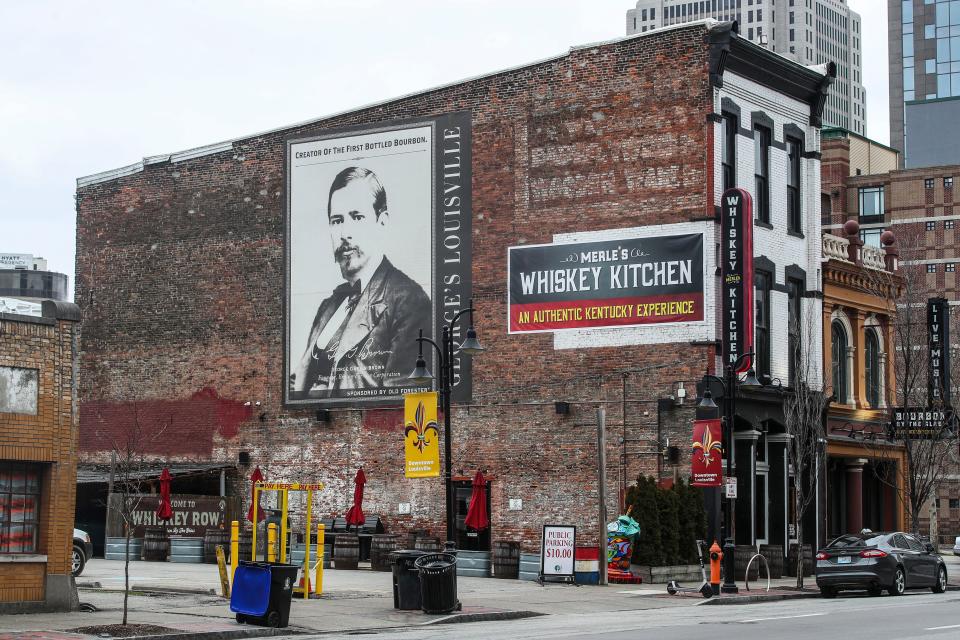
Indeed, as Whiskey Row developed, so too did the immediate surrounding area. From restaurants including Sidebar at Whiskey Row, Troll Pub Under the Bridge, Merle’s Whiskey Kitchen and Barrel Bar and Grill to the Hell or High Water speakeasy and newly added eatery Nic & Norman’s on Washington Street, the area around Whiskey Row is abuzz.
For Jones, the developer, the block’s last 25-plus years underscore the need for public sector investment (as seen in the development of a heavily industrial waterfront into Waterfront Park), utilization of tax credits and strong civic leadership.
On a personal note, she can’t help but think of her father, who died in 2003, when she sees Whiskey Row now.
The attorney-by-day performed weekend magic shows by night in the building he bought in 1984, in a theater above what is now Bearno's. But he had more on his mind than his next magic trick.
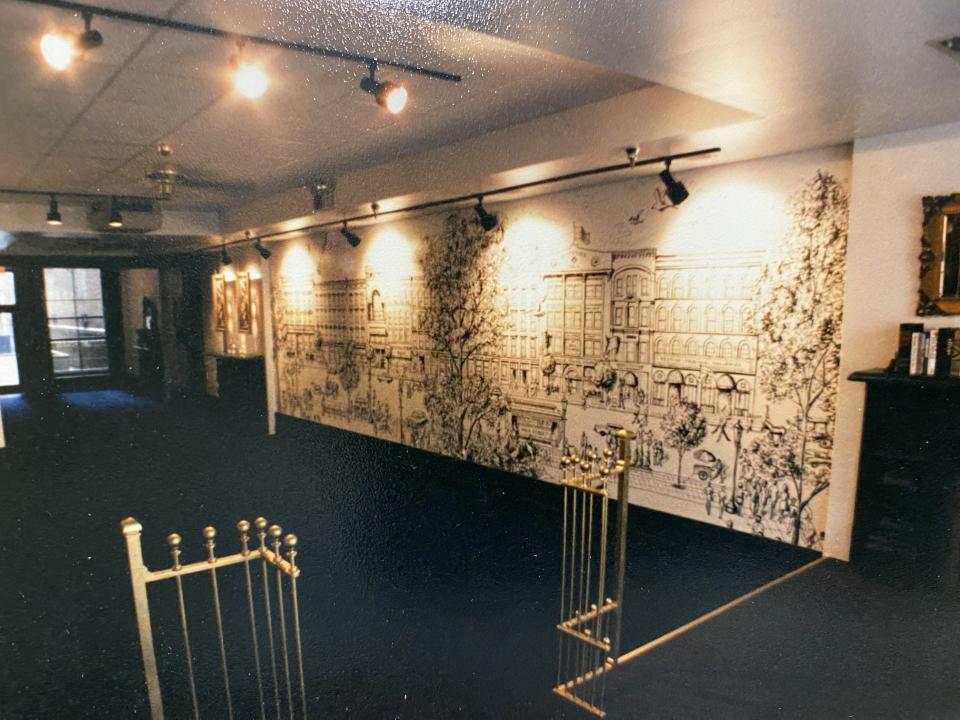
He had drawings and a 3D model of a fully revitalized Whiskey Row, complete with retail, offices, residential space and restaurants. Storefronts were beautified. People filled the streets enjoying the many offerings.
"And that's what I think when I go down there, I say, 'See, daddy, you were right,'" she said. "'You had the right vision for this block. It just took a lot longer than we hoped.'"
Growth & development reporter Matthew Glowicki can be reached at mglowicki@courier-journal.com, 502-582-4000 or on Twitter @mattglo.
This article originally appeared on Louisville Courier Journal: Explore 100-plus years of Whiskey Row history in downtown Louisville

